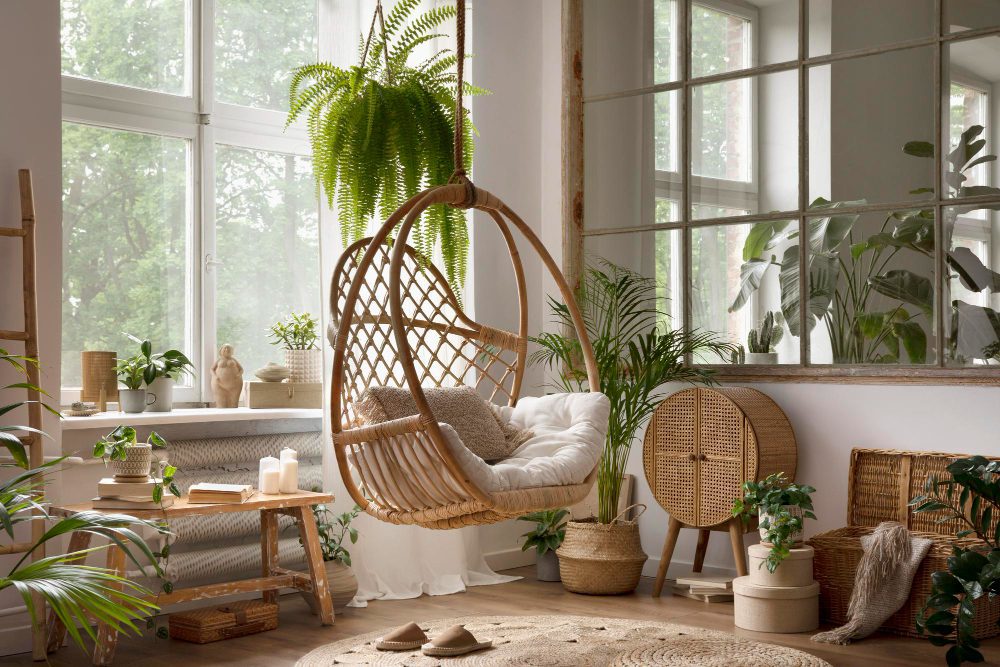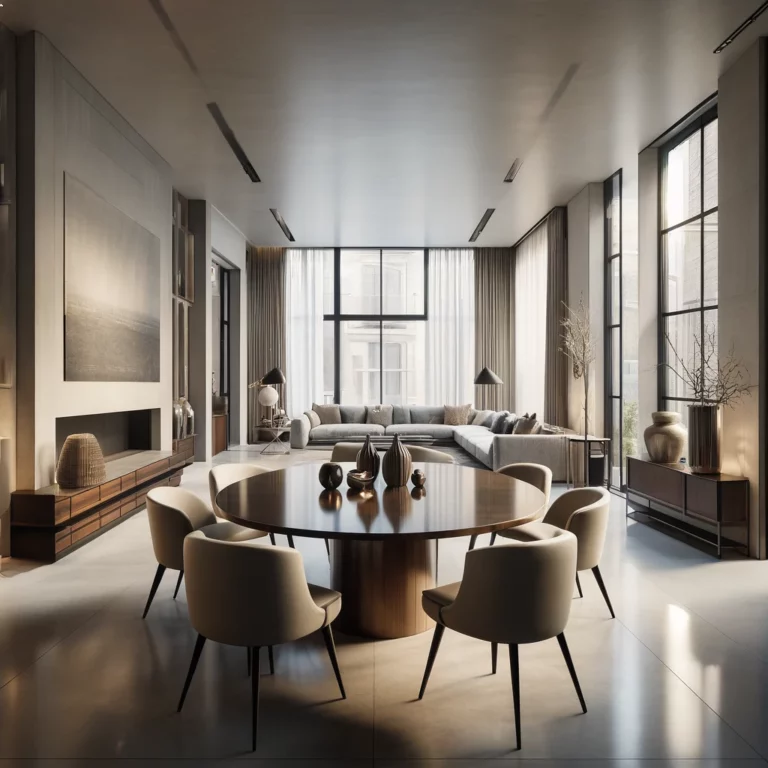

Table of Contents
ToggleIn a world embracing environmental consciousness, sustainable design furniture has emerged as a beacon of responsibility and style.
Sustainable design furniture embodies a philosophy that transcends mere visual appeal;
it represents a steadfast commitment to minimizing environmental impact and fostering a harmonious coexistence with nature.
At its core, sustainable design goes beyond creating beautiful pieces; it’s about shaping a future where responsible choices and conscious practices guide the creation of functional and aesthetically pleasing furniture.

Crafting furniture with a focus on longevity is a cornerstone of sustainable design. This means moving away from the disposable culture that often dominates the furniture industry.
Instead, the emphasis is on creating timeless pieces that withstand the test of time both in terms of durability and style.
By encouraging longevity, sustainable design challenges the notion of frequent replacements, promoting a more sustainable and less wasteful approach.
Recyclability is another vital aspect that defines the essence of sustainable design. Sustainable furniture is crafted with materials that can be recycled or repurposed, minimizing the impact on landfills.
This cradle-to-cradle approach ensures that at the end of a product’s lifecycle, its materials can be reincorporated into the production cycle, reducing the overall environmental footprint.
Moreover, eco-friendly practices are woven into the very fabric of sustainable design. This involves careful consideration of the entire production process, from the sourcing of raw materials to the manufacturing techniques employed.
Opting for materials with lower carbon footprints, utilizing energy-efficient production methods, and minimizing waste generation are all integral components of sustainable design practices. This holistic approach ensures that every step in the creation of furniture aligns with environmental preservation.
Investing in sustainable furniture transcends fleeting trends; it represents a deliberate choice laden with a multitude of benefits.

Beyond mere aesthetics, sustainable furniture contributes significantly to environmental preservation. By opting for eco-friendly materials and manufacturing processes, individuals actively reduce their carbon footprint, mitigating the impact on our planet.
Moreover, sustainable furniture aligns with ethical production practices. Supporting brands committed to fair labor conditions and responsible sourcing ensures a positive social impact.
The durability inherent in sustainable designs means less frequent replacements, fostering a culture of mindful consumption.
Delving into the realm of materials used in sustainable furniture unveils a steadfast commitment to eco-friendly alternatives that redefine the industry.
Bamboo stands out as a versatile and rapidly renewable resource, offering strength and elegance. Reclaimed wood, rich with character and history, not only reduces demand on new timber but also minimizes waste.
The integration of recycled metals further underscores sustainability, repurposing materials to create unique, durable pieces.
These examples signify a conscious departure from conventional materials, emphasizing the fusion of style and eco-consciousness, showcasing that furniture can be both aesthetically pleasing and environmentally responsible.
Sustainability and innovation go hand in hand. Designers are pushing boundaries, creating functional, aesthetically pleasing furniture while maintaining a strong commitment to sustainable practices.
in the commendable shift towards sustainable furniture, the industry faces several challenges that demand careful navigation. One significant hurdle lies in striking a delicate balance between cost considerations and the adoption of eco-friendly practices.
Sustainable materials often come with higher production costs, posing a challenge for manufacturers to maintain competitive prices in the market.
The availability of sustainable materials is another pressing concern. Sourcing these materials at scale can be intricate, requiring extensive networks and reliable suppliers.
This challenge prompts the industry to explore innovative solutions and alternative materials to meet growing demand without compromising sustainability goals.
Additionally, there exists a need for enhanced consumer education. While awareness of sustainable practices is on the rise, many consumers remain uninformed about the intricacies of eco-friendly furniture.
Bridging this knowledge gap is vital to empower consumers to make informed choices, fostering a greater understanding of the long-term benefits of investing in sustainable pieces.
Consumers wield immense influence in steering the trajectory of sustainable design into the future. Their choices act as catalysts for industry transformation.
Making informed decisions, such as opting for eco-friendly materials and supporting brands committed to sustainability, establishes a powerful demand for responsible practices. By choosing products with transparent and ethical production processes, consumers directly contribute to a market shift, urging more companies to adopt sustainable principles.
This collective influence not only stimulates the growth of eco-conscious practices but also sends a clear message to industries: sustainability is a priority.
Ultimately, consumer choices become a driving force propelling the evolution towards a more environmentally conscious design landscape.
Spotlighting brands dedicated to sustainability reveals the transformative influence businesses can wield. These pioneering entities, such as Greyge, exemplify a harmonious coexistence of style and sustainability.
Greyge, with its innovative approaches and eco-friendly ethos, stands out as a beacon of responsible design. By incorporating recycled materials and championing ethical practices, Greyge embodies the fusion of aesthetics and environmental consciousness.
This commitment from brands sets a crucial precedent, proving that profitability and planet-friendly practices can go hand in hand.
Encouraging consumers to explore such brands becomes imperative for fostering a sustainable future. Take a step towards responsible choices – visit Greyge’s website to discover the elegance of sustainable living. Visit Greyge.
Look for certifications such as FSC (Forest Stewardship Council) and materials like reclaimed wood.
While some sustainable options may have a higher upfront cost, their longevity often makes them cost-effective in the long run.
Yes, through DIY projects like repainting, reupholstering, or repurposing old furniture with eco-friendly materials.
Not at all. Innovative sustainable designs prove that style and sustainability can coexist seamlessly.
Consumers drive change. By choosing sustainable options and supporting eco-conscious brands, they influence the industry towards greener practices.



Copyright 2023 Greyge – Contacts – Who we are – Mauro Falomi – Telephone: +39 3384511793 – P.iva IT12874801009 – Reg. imprese RM 1678638 – Pec maurofalomi@pec.greyge – E-Mail info@greyge.com – Via Ludovica Albertoni n.90 00152 Roma (RM) – Italia – Privacy & cookie policy – Refund and Returns Policy – Our Shipping Policy